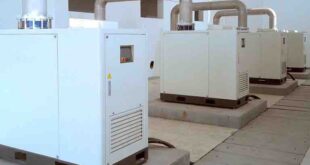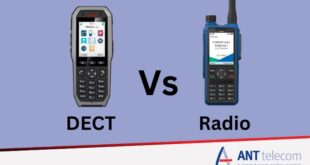The transition from traditional wired systems to advanced wireless and Bluetooth technologies in industrial settings is increasing. The advantages of wireless telemetry include low-power devices, network topologies like mesh or star, and cloud-integrated IoT platforms.
Wireless telemetry systems provide the easiest and most cost effective way for plant and asset managers to gather system data across their sites. However, with different communications options available, it is sometimes difficult to know which option is best for the job. Here, Mantracourt explains the key considerations for selecting the best type of telemetry system for the job and, crucially, how to get the most out of whichever system you opt for.
Before wireless technologies became popular, any time an engineer needed to take a load cell reading, they would — and many still do — rely on a physical connection to the load cell. This would require the operator to directly plug their hand terminal into the load cell to take a reading, or use a human machine interface (HMI) to display the data from multiple sensors.
This setup is fine if you are measuring the reading from a single load cell, but add a few units and the complexity begins to add up. The cabling and installation costs of wiring such a system can often end up being more than the load-cells themselves, and it takes time before you can get up and running.
Not only does this require the engineer to get up close to the application to take the reading — potentially putting them at risk of injury. Engineers must also use a dedicated, often proprietary, terminal along with all the cost and programming associated with that.
The options for wireless transmission are varied, for example, low power devices that use transmission bands, such as 2.4GHz, can transmit on multiple channels and are remarkably tolerant of radio frequency interference. Devices range from these low power technologies to devices that use mesh or star network topologies. These networks are more sophisticated, self-healing and work at greater range than their non-mesh counterparts — but this is at the expense of being power hungry, lower resolution and more complex to configure.
And then there are fully fledged, cloud-integrated IoT platforms, which may be overkill if all you’re doing is periodically measuring the load on a container as bulk material is decanted before being processed. This on-demand, session-based approach means the operator only takes a reading when they need it, rather than being inundated with an ongoing live feed from their system.
T24 vs B24
IoT-connected wireless devices play a critical role in the smart factories that are becoming increasingly common in the age of Industry 4.0. Portable, flexible and simple to install, they allow users to easily gather and analyse all relevant data from their manufacturing equipment.
However, in order to realise the full benefits of IoT wireless technology, there are some important steps that operators should follow during the system installation process.
First, undertake a site survey to assess on-site signal strength and data capture abilities. Furthermore, this will allow any significant obstacles or dead spots to be identified. To do this, after ensuring that the sensor is in place and transmitting, the site can be explored with a receiver, such as one of Mantracourt’s T24 handheld receivers.
Exploring the site allows users to identify any dead spots and plan their layout accordingly. It’s important to remember that the ground can absorb a large portion of the signal, so both the transmitter and the receiver should be located above ground.
Next, consider any additional power requirements or necessary enclosures. For example, if a sensor is deployed in a harsh environment, an effective enclosure can prevent damage from water or aggressive chemicals. This is why each of Mantracourt’s wireless transmitter modules can be ordered in one of three IP rated enclosures.
When choosing or designing an enclosure, it’s important to remember that the radio signal will need an aperture to escape, such as a small fiberglass window. Users should also remember to tighten up any cable glands and use a drip loop when connecting cables to sensors, transmitters and repeaters to prevent moisture from entering.
While IoT platforms have their merits for accessing real-time information remotely and sharing it automatically across a business, sometimes all you need is a quick and easy way of taking a reading using a device you already have, like your smartphone or tablet.
This is why Mantracourt developed the B24 Bluetooth Strain Transmitter. We chose Bluetooth Low Energy, also called Bluetooth 4.0, because it is efficient for portable, battery-powered use and can easily be used with your existing devices.
One of B24’s key features is the ability for multiple transmission. By tapping into the advertising data channels of Bluetooth Low Energy, it allows multiple transmitters to transmit to one device, and one transmitter to be viewed by multiple devices. This one-to-one, one-to-many, many-to-one and many-to-many capability really opens up the access to data.
However, the hardware technology is only one half of the story. Being able to use your phone to take a reading is only valuable if the app offers the same kind of flexibility and customisation as a dedicated HMI or control system. To achieve this, we’ve developed an app for both iOS and Android that features dashboards that can be customised to your own preferences.
Our Bluetooth app can create multiple projects, each with their own dashboards and list of modules. These can be used to build powerful expressions to display just the information they need on various tiles.
So, what implications does this have for industry? These developments in Bluetooth technology and app customisation mean that engineers have more flexible options available to them. These range from complete real-time IoT platforms, all the way through to manual measurement, with Bluetooth offering a cost-effective option in between — proving that strain measurement doesn’t have to be an expensive undertaking.
To find out more about how to select the right telemetry system for a given application, download Mantracourt’s latest guide: A guide to effective telemetry installation.
 Engineer News Network The ultimate online news and information resource for today’s engineer
Engineer News Network The ultimate online news and information resource for today’s engineer



